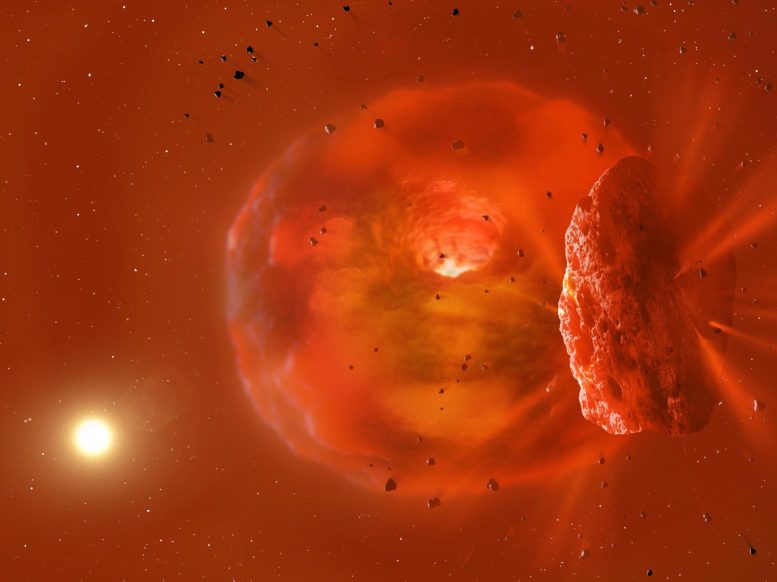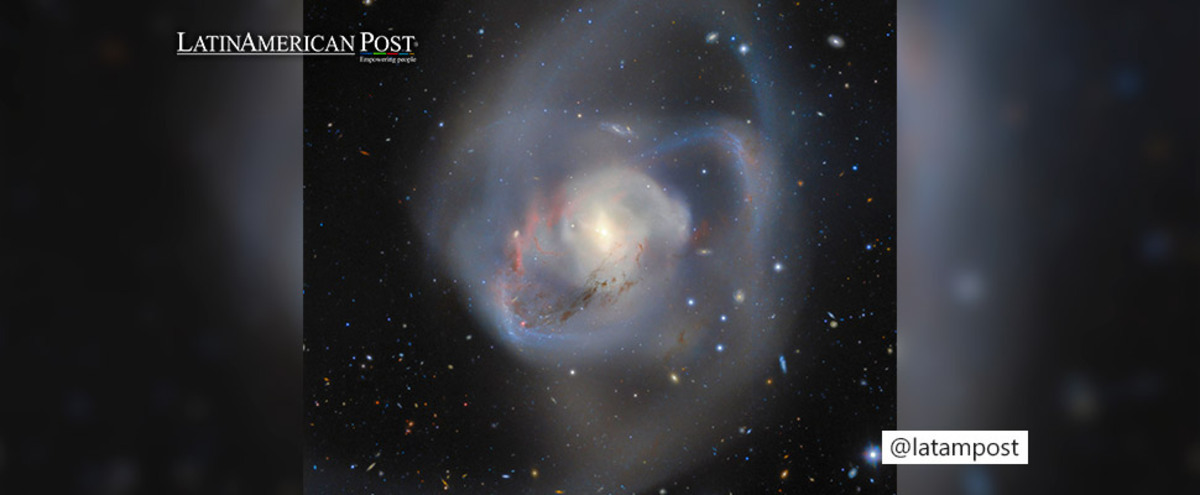Black holes are extremely dense regions of space with intense gravitational pull. The Sun is a typical star in our solar system, providing light and heat.
In the vast expanse of the universe, black holes and the Sun are two fascinating and contrasting celestial objects that have captured the curiosity of scientists and stargazers alike. While both are integral parts of the cosmic landscape, their characteristics and effects on the surrounding space are distinctly different.
Black holes, with their powerful gravitational pull and ability to warp space and time, are enigmatic entities that challenge our understanding of the universe. On the other hand, the Sun, a massive ball of hot plasma, serves as the primary source of energy for life on Earth and sustains our planet’s ecosystem. Let’s delve deeper into the unique features of black holes and the Sun to uncover the mysteries of these celestial marvels.
What Is A Black Hole?
What is a Black Hole?
Formation Of Black Holes
Black Holes are formed when massive stars collapse under their gravity.
The collapse causes a rip in the fabric of space-time.
These collapsed stars have infinite density and an escape velocity greater than the speed of light.
Characteristics Of Black Holes
- Black Holes have a strong gravitational pull that not even light can escape.
- They can range in size from a few times the mass of the Sun to supermassive black holes millions of times larger.
- Black Holes can be detected by the effect they have on nearby stars and gas.
What Is The Sun?
What is the Sun? The Sun is a massive ball of hot gas that generates heat and light through nuclear fusion processes.
Structure Of The Sun
The Sun consists of different layers including the core, radiative zone, convective zone, photosphere, chromosphere, and corona.
- Core: The central region where nuclear fusion reactions take place.
- Radiative Zone: The layer where energy moves outward through radiation.
- Convective Zone: The outermost layer where heat is transferred through convection.
- Photosphere: The visible surface of the Sun where sunlight is emitted.
- Chromosphere: The layer above the photosphere that emits a reddish glow during solar eclipses.
- Corona: The outermost layer that extends into space and is visible during a total solar eclipse.
Solar Fusion
In the core of the Sun, hydrogen atoms fuse together to form helium, releasing massive amounts of energy in the process.
- Nuclear Fusion: The process where atomic nuclei combine to form a heavier nucleus.
- Energy Release: This fusion process releases photons that travel outward, providing heat and light to the solar system.
Size And Mass
Comparing the vast size and mass of a black hole to that of the sun reveals a striking contrast. While the sun shines brightly with its immense energy, a black hole exerts an intense gravitational pull due to its concentrated mass, creating a powerful vacuum in space.
The sheer magnitude of these celestial bodies highlights the wonders of the universe.
Comparing The Size
When it comes to the size of black holes and the sun, the difference is truly astronomical. The sun, a massive burning ball of gas, has a diameter of about 1.4 million kilometers. To put that into perspective, you could fit over one million Earths inside the sun!
On the other hand, black holes are incredibly compact and dense objects. Their size is determined by the event horizon, which is the point of no return where nothing can escape the gravitational pull of the black hole. Despite their small size, black holes can have masses millions or even billions of times greater than that of the sun.
Comparing The Mass
When comparing the mass of black holes and the sun, the difference is mind-boggling. The sun has a mass of around 1.989 x 10^30 kilograms. This enormous mass allows the sun to generate the heat and light that sustain life on Earth.
Black holes, on the other hand, possess an unfathomable amount of mass concentrated within a relatively small space. The mass of a black hole is determined by the amount of matter that it has consumed over its lifetime. The more matter it consumes, the more massive it becomes. Some black holes have masses billions of times greater than that of the sun, making them among the most massive objects in the universe.
In conclusion, while the sun is massive compared to us Earthlings, it pales in comparison to the mind-bending size and mass of a black hole. So if you thought the sun was impressive, think again!

Credit: scitechdaily.com
Gravitational Force
Gravitational force is a fundamental concept in physics that governs the interactions between celestial bodies, such as black holes and the sun. Understanding this force provides valuable insights into the dynamics of these astronomical phenomena and their impact on the surrounding objects.
Understanding Gravitational Force
Gravitational force is the natural phenomenon by which objects with mass or energy attract one another. It is directly proportional to the product of their masses and inversely proportional to the square of the distance between their centers. In the context of black holes and the sun, gravitational force determines the orbits, interactions, and behaviors of surrounding celestial bodies.
Impact On Surrounding Objects
Gravitational force exerts a significant impact on surrounding objects, influencing their orbits, trajectories, and even their structural integrity. For instance, planets orbit the sun due to its gravitational pull, while nearby stars and gas are engulfed by the immense gravitational force of a black hole, causing them to spiral inward.
Energy And Radiation
Energy and radiation are fundamental aspects of the universe, influencing the behavior and characteristics of celestial bodies. The production of energy and emission of radiation differ significantly between black holes and the sun, leading to their distinct roles and impact in the cosmos.
Energy Production In The Sun
The sun primarily generates energy through a process called nuclear fusion, wherein hydrogen atoms are fused together to form helium, releasing an immense amount of energy in the process. This energy sustains the sun’s luminosity, heat, and gravitational stability, enabling it to support life on Earth.
Emission Of Radiation From Black Holes
Black holes emit radiation through various mechanisms, with the most prominent one being Hawking radiation. This phenomenon occurs near the event horizon, where particle-antiparticle pairs are created, with one escaping as radiation while the other falls into the black hole. Additionally, accretion disks surrounding black holes also emit high-energy radiation, making them detectable across vast distances in the universe.

Credit: now.tufts.edu
Life Cycle
Black holes and the sun have contrasting life cycles. While the sun burns through nuclear fusion, black holes form when massive stars collapse under their own gravity, resulting in an intense gravitational pull that nothing can escape.
Life Cycle Of Stars Like The Sun
Stars, including the Sun, go through a fascinating life cycle that can span billions of years. The life of a star begins when a dense cloud of gas and dust, known as a nebula, collapses under its own gravity. The contraction of the nebula leads to the formation of a protostar, as particles merge and release energy through nuclear fusion. Once the protostar reaches a stable state, it enters the main sequence phase, where it burns hydrogen to produce helium in its core. During this phase, the Sun and other stars release energy and light, allowing life to exist on Earth.
After billions of years on the main sequence, stars like the Sun exhaust their hydrogen fuel supply. As a result, the balance between the gravitational force pulling the star inward and the outward pressure from nuclear fusion is disrupted. This imbalance causes the star to undergo significant changes.
The Fate Of Black Holes
Black holes, on the other hand, are the remnants of massive stars that have exhausted their nuclear fuel and undergone a cataclysmic collapse. These celestial objects exhibit an incredibly strong gravitational pull, which prevents even light from escaping their grasp. As a result, they appear dark and seemingly invisible in space.
The fate of black holes is a mystery that scientists continue to explore. One possibility is that black holes can grow in size by consuming nearby matter, such as gas and dust. As more material is absorbed, the mass of the black hole increases, and its gravitational pull becomes stronger.
Another possible fate for black holes is their eventual evaporation. This theory, proposed by renowned physicist Stephen Hawking, suggests that over an extremely long timescale, black holes can gradually lose mass and energy through a process called Hawking radiation. Ultimately, this would lead to the complete evaporation of the black hole, leaving behind a void in space.
Comparing The Life Cycles
While the life cycle of stars like the Sun reveals their vital role in sustaining life, black holes represent the dramatic end of massive stars. The comparison between their life cycles showcases the contrasting ways celestial objects evolve and shape the universe.
In conclusion, the life cycle of stars such as the Sun involves the formation of a protostar, a main sequence phase, and eventual transformation. On the other hand, black holes are the remnants of massive stars that have experienced a catastrophic collapse, leading to their enigmatic existence. Studying the life cycles and fates of both stars and black holes deepens our understanding of the universe we inhabit.
Impact On The Universe
Black holes and the sun play pivotal roles in shaping the universe and impacting all celestial bodies.
Influence Of Black Holes On Galaxies
Black holes exert immense gravitational forces that influence entire galaxies by bending light and altering movement.
Galaxies rely on black holes to regulate the distribution of stars and maintain cosmic equilibrium.
Role Of The Sun In Sustaining Life On Earth
The Sun nurtures life on Earth by providing warmth, essential for sustaining plants, animals, and ecosystems.
Earth’s distance from the sun ensures the right conditions for life to thrive, fostering biodiversity and evolution.

Credit: www.the-sun.com
Frequently Asked Questions For Black Hole Vs Sun
What Is The Difference Between A Black Hole And The Sun?
A black hole is a region in space where the gravitational pull is so strong that not even light can escape, whereas the sun is a star at the center of our solar system that emits light and heat.
How Do Black Holes And Suns Form?
Black holes form when massive stars collapse under their gravity, whereas suns form from the gravitational collapse of a region within a large molecular cloud.
What Is The Size Difference Between A Black Hole And The Sun?
Black holes can range in size from a few times the mass of the sun to millions of times its mass, whereas the sun has a diameter of about 1. 4 million kilometers.
Can A Black Hole And The Sun Exist In The Same Galaxy?
Yes, black holes and suns can exist in the same galaxy. In fact, the Milky Way galaxy, where our solar system is located, hosts both massive black holes and numerous stars, including our sun.
Conclusion
The comparison between black holes and the sun reveals the contrasting nature of these celestial bodies. While the sun is a radiant source of life-sustaining light and heat, black holes are mysterious and infinitely dense regions of spacetime. Understanding their distinct properties and behaviors can deepen our understanding of the vast and enigmatic universe we inhabit.
Explore the captivating world of these cosmic entities and let your imagination soar.



